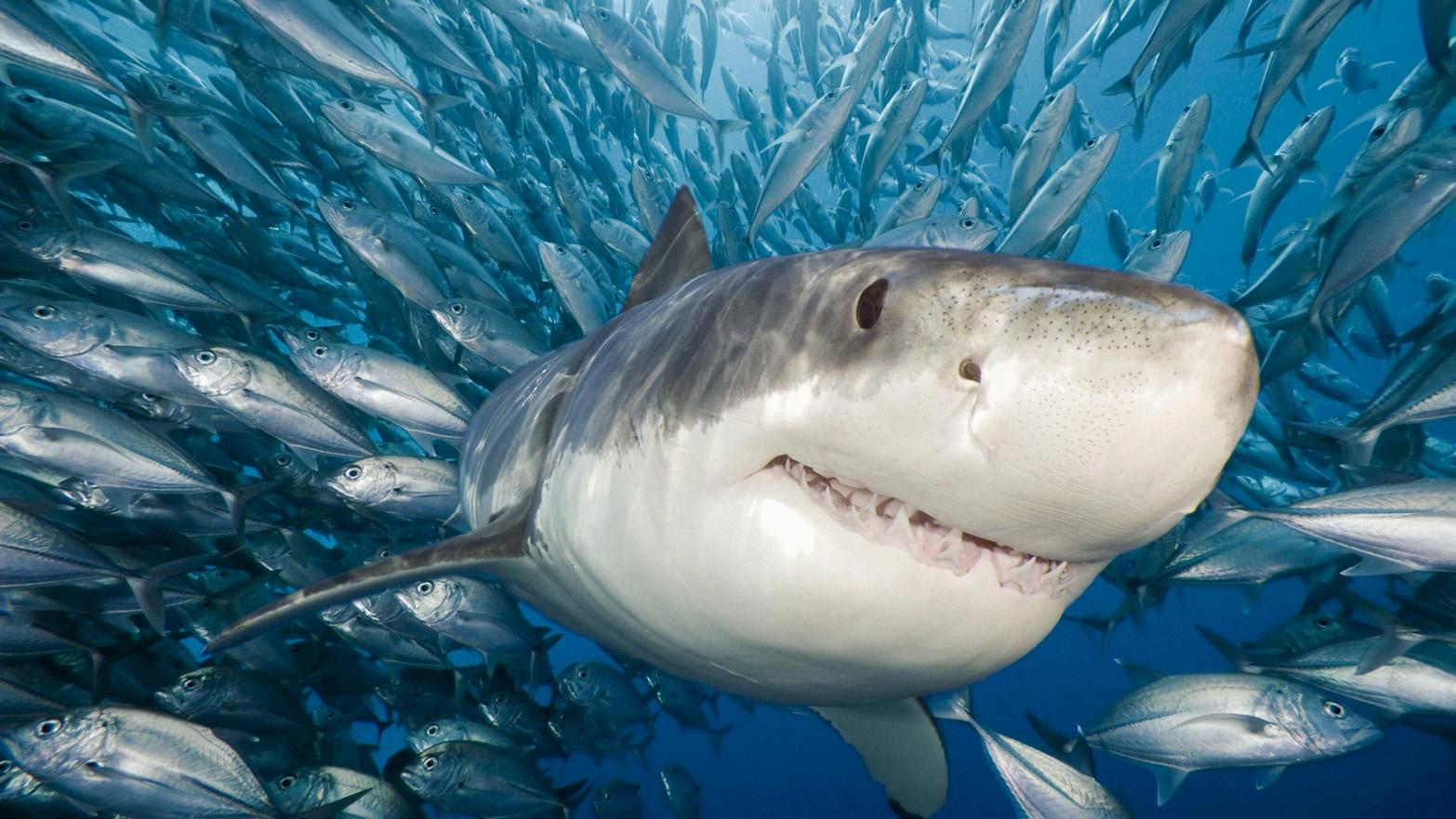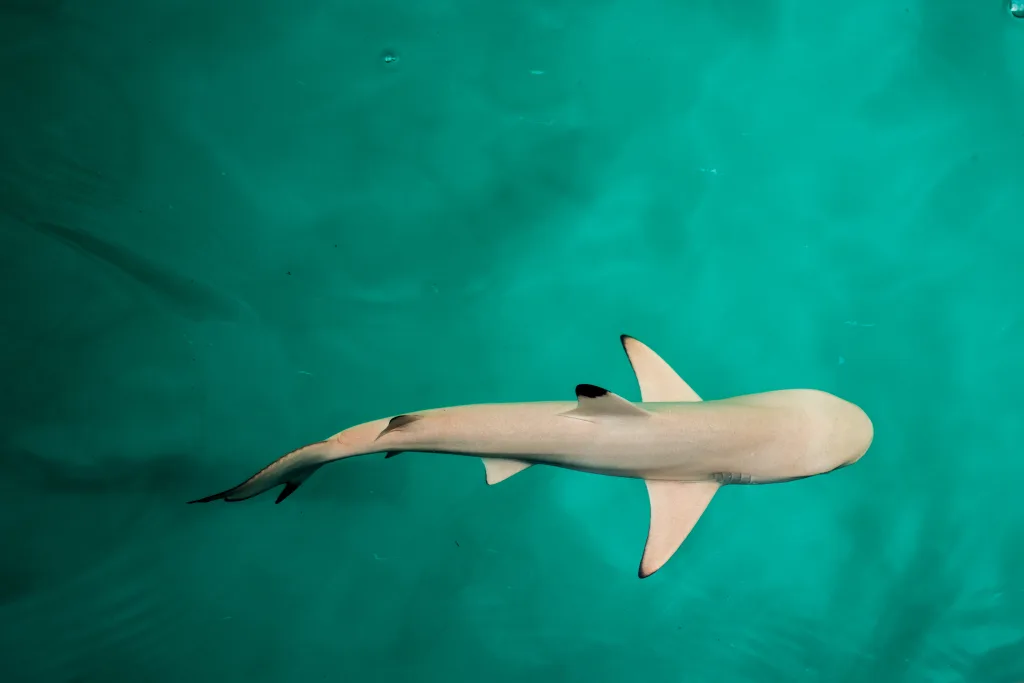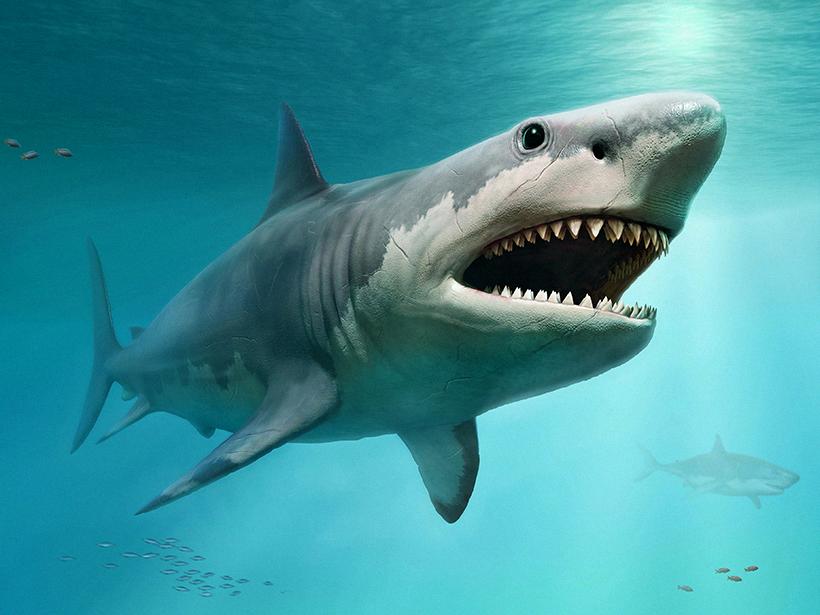Are Sharks Cold Blooded?
The answer to this question is both yes and no. Most sharks are cold-blooded, meaning teir body temperature is the same as the temperature of the water around them. This type of biology is referred to as ectothermy and is seen in a variety of other animals such as snakes, turtles, and frogs. However, there are some species of sharks that have adapted a special trait allowing them to maintain a body temperature higher than the surrounding water. These species are known as endothermic sharks and include the great white shark, salmon shark, shortfin mako shark, longfin mako shark, and porbeagle shark.
Endothermy allows these species of sharks to live in cold waters such as those found near the Arctic Circle. Endothermic sharks have developed a specialized blood vessel structure called a countercurrent exchanger which helps them to maintain their body heat at a higher level than that of the surrounding environment. This adaptation allows them to become more active in colder climates than their ectothermic counterparts, who must rely on external sources such as sunlight for energy production in order to remain active.
Sharks with ectothermic biology still require oxygen but instead rely on gills that extract oxygen from the water around them for respiration. These gills also help regulate their internal body temperature by releasing excess heat into the environment around them through evaporative cooling processes.
In conclusion, it can be said that most types of sharks are cold-blooded (ectothermic) but there are some species with endothermic traits allowing them to survive in colder climates than other fish species can manage. Endothermy provides these species with an advantage over those without this adaptation due to increased activity levels and efficiency when hunting prey or evading predators in colder waters.
Are Great White Sharks Cold-Blooded?
No, great whites are not cold blooded. They have a unique blood vessel structure called a countercurrent exchanger, which helps them to maintain a body temperature that is higher than the surrounding water. This alows them to remain active in colder waters and hunt for prey more effectively.

Are Whale Sharks Cold-Blooded Animals?
Yes, whale sharks are cold-blooded, meaning that their body temperature is regulated by the temperature of the surrounding environment. They are ectothermic animals, meaning they rely on external sources such as the sun or warm water to maintain their body temperatures. Unlike warm-blooded animals like mammals and birds, they do not produce their own body heat internally. Whale sharks also breathe through gills that extract oxygen from water, just like oher fish species.
Can Sharks Survive in Cold Water?
Yes, certain species of sharks are able to survive in very cold waters due to their endothermic biology. Sharks with endothermic biology have the ability to generate heat within their bodies, which helps them survive in cold temperatures. These species of sharks can be found as far North as the Arctic Circle, where temperatures can plummet to well below freezing. In addition to being able to tolerate extremely cold temperatures, these species of sharks also have a special type of antifreeze glycoprotein in their blood that prevents their cells from freezing and alows them to survive even in sub-zero temperatures.
Do Sharks Possess Body Heat?
Yes, some sharks do have body heat. Lamnid sharks, including great white sharks, salmon sharks, shortfin mako sharks, longfin mako sharks, and porbeagle sharks, can raise ther internal body temperature to be warmer than the surrounding water. This is known as endothermy. Most other shark species are cold-blooded (ectothermic), meaning their body temperature is the same as the temperature of the water around them.
Are Crocodiles Cold-blooded?
Yes, crocodiles are cold-blooded animals. This means that their body temperature is regulated by the environment and not internally like in warm-blooded creatures. Cold-blooded animals must warm up by basking in the sun or cool down in the shade, whereas warm-blooded animals can maintain a constant body temperature regardless of the environment. Crocodiles have a very slow metabolism, which helps them conserve energy and survive long periods of time without eating.

Source: thedailybeast.com
Predators of the Great White Shark
Although great white sharks do not have many natural predators, there are some animals that can prey on them. The orca (or killer whale) is the most well-known predator of the great white shark, although these interactions are very rare. Orcas will sometimes hunt and eat the smaller juvenile individuals, but they usually do not target adult sharks. Other potential predators of the great white shark include other large sharks such as the tiger shark, bull shark and even other great whites. Additionally, it is believed that humans may also play a role in predation of great whites throuh illegal hunting and accidental bycatch in fishing nets.
How Whales Avoid Freezing in Cold Water
Whales are able to survive in the frigid waters of the Atlantic Ocean thanks to their thick layer of blubber, which is a type of fat found just beneath the skin. This layer of fat acts as an insulator, helping them to maintain their body heat and avoid freezing temperatures. Blubber also serves to protect whales from predators, such as sharks, by making it difficult for them to bite through the thick layer. The blubber also helps whales stay buoyant and warm whie they are swimming in cold waters. In addition, numerous blood vessels located near the surface of the skin help transfer heat from the whale’s core body temperature to its exterior and keep it warm. Lastly, whales can also rely on their metabolism and muscle movement for additional warmth.
Is the Megalodon Warm or Cold-blooded?
Megalodon was likely a partially warm-blooded animal, similar to today’s great white sharks. This is because the heat generated by their swimming allowed them to hunt in colder waters. While most fish are exclusively cold-blooded, meaning their body temperature is regulated by the surrounding environment, megalodon may have been able to maintain a higher internal body temperature than othr fish due to their ability to generate and retain heat. This would have provided megalodon with an advantage when hunting in cold waters.
Do Sharks Produce Milk?
No, sharks do not have milk. Sharks are fish and lack the mammalian characteristics that woud allow them to produce milk. Mammals have glands in their bodies that secrete milk to feed their young, but sharks do not have any such glands. Additionally, unlike mammals, sharks lack hair and lungs.

Can Sharks Survive Without Movement?
No, most sharks will not suffocate if they stop moving. Sharks have the ability to pump water over their gills and extract oxygen from it, allowing them to breathe even when inactive. This process is known as ‘ram ventilation’. However, some iconic species such as great white sharks, whale sharks, hammerheads and mako sharks require constant forward motion or a strong current flowing towards their mouths in order to get enough oxygen. Without this current of water flowing over their gills, these species wuld eventually suffocate.
Do Sharks Experience Sleep?
Yes, sharks can and do fall asleep. Recent research published in Biology Letters has found that while some sharks need to swim constantly to keep oxygen-rich water flowing over ther gills, they still manage to sleep. The researchers observed the behavior of some common species of shark, including nurse, lemon and sandbar sharks, and found that they all displayed a reduced activity level when they were sleeping. They also noted that while sleeping, many sharks kept their eyes open but reduced the size of their pupils. This indicates that they are in a state of rest similar to sleep even though they still remain alert.
Do Sharks Experience Pain?
Yes, sharks do feel pain. Scientists have conducted several studies that suggest that sharks are capable of sensing and responding to painful stimuli. For instance, research has shown that when a shark was exposed to an experimentally induced electric shock, it would respond by exhibiting avoidance behaviors. Other studies have found that shark fins contain nerve endings associated with the transmission of pain signals, further indicating that sharks can experience pain. In addition, the brains of sharks show similar neural structures to those seen in oher animals known to experience pain such as mammals, suggesting that they are capable of feeling this sensation too. Finally, there is evidence that when a shark is injured or stressed its body releases hormones associated with stress and distress which can be interpreted as signs of pain.
Do Sharks Have a Preference for Humans?
No, sharks do not prefer humans as a food source. Sharks are opportunistic predators and generally prefer to feed on fish and other marine mammals such as seals, dolphins, and whales. Of the more than 300 species of sharks, only about a dozen have been involved in attacks on humans. Most shark attacks are cases of mistaken identity, whre a human is confused with a more preferred prey item. In addition, many shark species have evolved behaviors to avoid contact with humans.

Source: eos.org
Do Sharks Possess Emotions?
Yes, sharks have feelings. Sharks are highly intelligent creatures and possess a variety of emotions including fear, anger, joy and even sadness. Scientists have observed that sharks can beome scared when handled or exposed to unfamiliar situations, and their behavior may change in response. For example, some sharks may become more aggressive or retreat from the situation. In addition, some species of sharks have been known to make sounds that are similar to crying out of distress or fear. Sharks can also form strong bonds with one another and even develop attachments to humans who feed them regularly.
Conclusion
In conclusion, sharks are primarily cold-blooded animals, meaning their body temperature is the same as the temperature of the water around them. However, certain species of lamnid sharks such as great whites, salmon, shortfin makos, longfin makos and porbeagles possess a specialized blood vessel structure called a countercurrent exchanger which allos them to maintain a body temperature that is higher than the surrounding water. This endothermic biology gives these species the ability to live in very cold waters and even as far north as the Arctic Circle.
